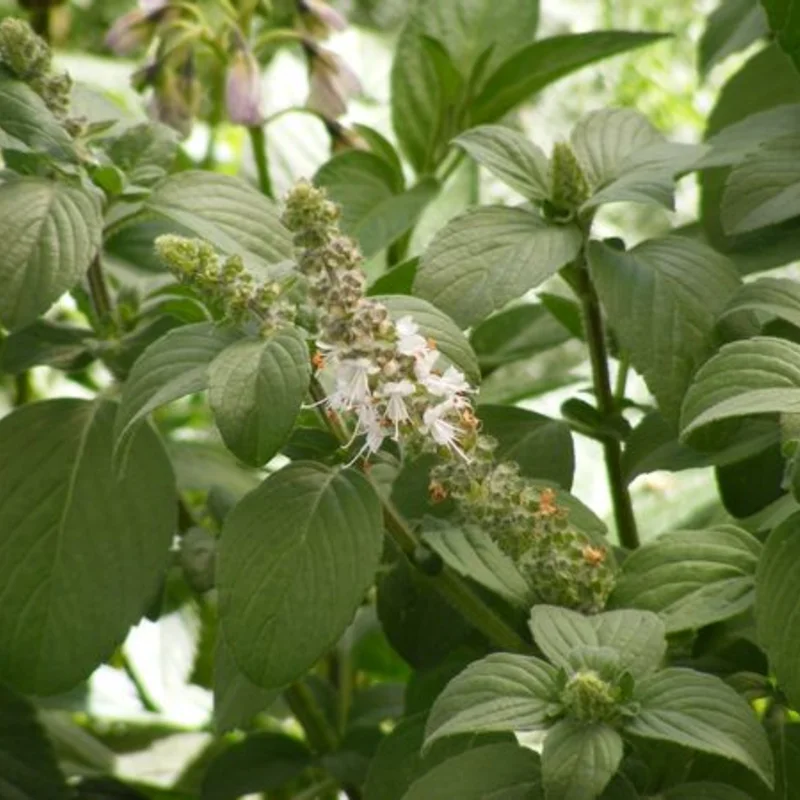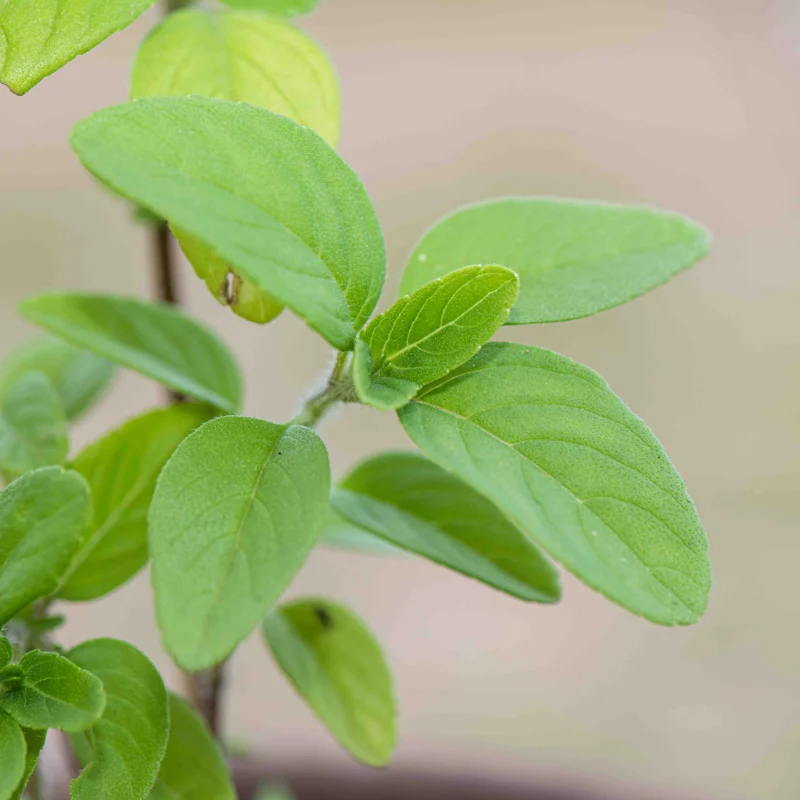Tulsi Kapura - Basil tulsi
Tulsi produces green, downy leaves with a strong camphor fragrance. It also produces white flowers with orange-red pollen.
It can reach 1 meter in height and spread, and sometimes almost 2 meters in very good growing conditions.
Ocimum kilimandsharicum is resistant to the fungus Fusarium oxysporum ssp. basilicii as well as to basil blight, Peronospora belbahrii.
To be discovered on the Kokopelli blog: "Tulsis and other Basilico-Molecular Truths to free ourselves from the Pharmacratic Terror".
These products may also be of interest to you
in bucket
Sow in trays at temperatures between 18 and 20°C, under a well-lit shelter, 6 weeks before planting. Transplant into individual cups when plants have 4 to 5 leaves, or plant directly into warmed soil. Take care not to over-water to avoid the risk of wilting.
It is tolerant to the fungus Fusarium oxysporum ssp. basilicii, as well as to Peronospora belbahrii, basil downy mildew.
March, April, May, June
June, July, August, September, October
in the ground, in pot, in the greenhouse
full sun
medium
potting soil, sandy, gravel, humus
drained, light, reheated
Ocimum kilimandscharicum
mid-season
200 seeds
Green
fragrance, edible
From 100 to 200 cm
From 2 to 4 cm
pointed
Kenya
"Semences de Kokopelli" by Dominique Guillet
Tulsi is native to Kenya. It is also known as "Kenyan Basil". It is cultivated in India and Africa for the production of essential oil, camphor and other mainly medicinal uses.
Traditionally, this species of basil has been used in East Africa for its medicinal virtues, for colds, coughs, bronchitis, abdominal pain, diarrhea, measles, nervous system disorders, tumors, microbial and fungal infections, etc., as well as for protection against mosquitoes.










